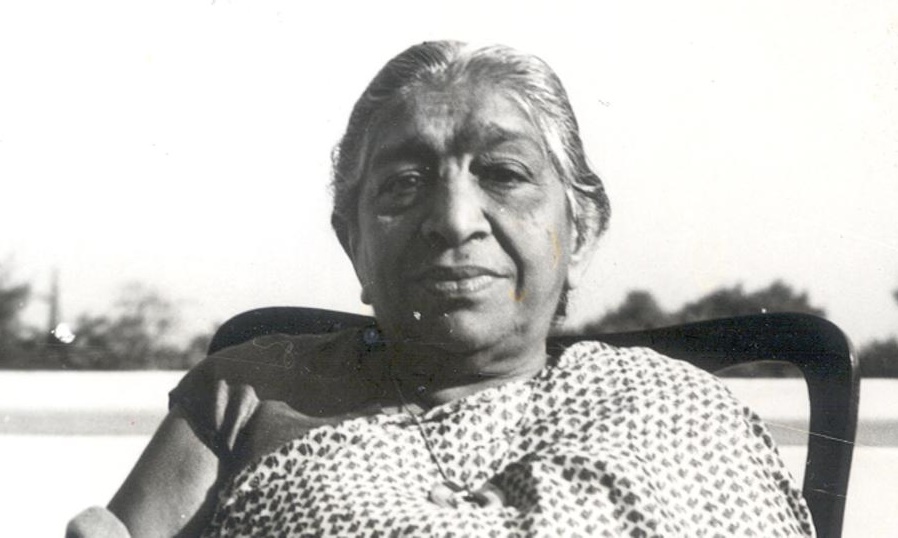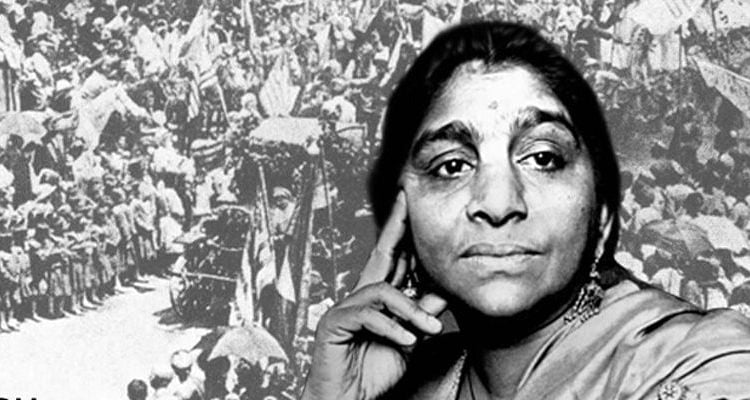Sarojini Naidu, lovingly called the Nightingale of India, holds an esteemed place in India’s political as well as literary history. Not only did she enrich Indian English poetry through her literary achievements, but also contributed immensely to the Indian freedom struggle. She was writing during the transitional period from the colonial to the post-colonial era, and thus, her works explore postcolonial themes like culture and history, as well as the conflicts between the East and the West, in an aesthetic fashion.
Sarojini Naidu was a poet as well as a patriot, and we see an amalgamation of both these sides of her personality in her literary works. Naidu was a progressive thinker. Throughout her life, she advocated civil rights, anti-imperialism, and women empowerment. She belonged to the group of writers who believed in the power of giving Indian sensibilities to English. Naidu, thence, wrote in English, and was one of the first Indian English poets to gain a huge Western audience and positive criticism.

Sarojini Naidu, often considered a child prodigy, began writing around the age of twelve. Despite writing in the British romanticism tradition of lyric poetry, her works align with her Indian nationalist politics, often using sense-evoking imagery to paint an aesthetic portrait of India. For the same reason, she has also been called the “Indian Yeats”.
Sarojini Naidu’s first collection of poems was published in London in 1905 by the name of The Golden Threshold. Edmund Gosse recommended its publication and this edition included an introductory section by Arthur Symons. Her poetry ranges from children’s poems to poems dealing with critical themes like tragedy, romance, patriotism, civil rights, women emancipation, and more.
Sarojini Naidu’s last poetry volume (The Broken Wing) also reflects her views on the suffrage of women. Like other women writers of the era, Naidu focused on the plight of the women in an orthodox patriarchal society. Their suffering and their struggle to sustain themselves in a chauvinistic society are brought out in her works
Her activism was governed by strong, clear ideals. “We want deeper sincerity of motive, a greater courage in speech, and earnestness in action.”, said Naidu and reflected the same in her poetry along with her social activism.
Her political activism was deeply rooted in beliefs of justice and equality. “When there is oppression, the only self-respecting thing is to rise and say this shall cease today, because my right is justice. If you are stronger, you have to help the weaker boy or girl both in play and in the work.”

Sarojini Naidu threw light upon the Indian contemporary life and its issues. She openly questioned caste barriers and gender inequality. The Bird of Time: Songs of Life, Death, and the Spring was her second poetry collection. It is rooted in the British romantic poetry tradition, yet deals more strongly with nationalist themes.
It was published in 1912, in both London and New York. Here, in a particular poem, Naidu imagines time as a bird and expresses the passing of time via the movements of a bird and the lens of nature. She uses abstract symbolism to convey deeper ideas, or perhaps even personal truth. This volume also contains her most famous poem, “In the Bazaars of Hyderabad”.
The poem was written during the Swadeshi Movement and propagates the idea of boycotting European merchandise in favour of homegrown and handmade Indian goods. “What do you sell O ye merchants? / Richly your wares are displayed.” It gives a depiction of the Indian craftsmanship by elaborating on the Indian bazaars.
Also read: Sarojini Naidu: The Nightingale Of India | #IndianWomenInHistory
The Broken Wing: Songs of Love, Death, and the Spring was published in 1917 and dedicated to Muhammad Ali Jinnah. This collection includes another famous poem “The Gift of India” which brings out the staunch patriotism of Sarojini Naidu as she pays a tribute to the Indian soldiers who fought for Britain during the first World War.
The poem highlights the sacrifices ofIndia as gifts to the British empire and the resulting grief. “To the comrades who fought in your dauntless ranks, / And you honour the deeds of the deathless ones, / Remember the blood of thy martyred sons!” “The Gift of India”, albeit a war poem, is charged with emotions and displays the grief caused by the death of so many soldiers.
Sarojini Naidu’s last poetry volume (The Broken Wing) also reflects her views on the suffrage of women. Like other women writers of the era, Naidu focused on the plight of the women in an orthodox patriarchal society. Their suffering and their struggle to sustain themselves in a chauvinistic society are brought out in her works.
Though Sarojini Naidu entered into the public realm first as a poet, she became a prominent political figure over the years. Her poetry borrows the English decadents’ diction and transposes the pictures into India. The suffering, passive women in Naidu’s poems, although, stand in stark contrast to Naidu’s own life, for she was a close ally of Tagore and Gandhi’s, and remained an active member of the nationalist movement
Furthermore, The Sceptred Flute (1928) and The Feather of the Dawn (1961) are two other poetry collections which form an integral part of the corpus of her works. In addition to these, a wide range of speeches and other assorted works by her were published as a collection under the title “Speeches and Writings of Sarojini Naidu” in 1918, containing works like “Nilambuja”, “True Brotherhood”, “Personal Element in Spiritual Life”, “Education of Indian Women”, “A Plea for Social Reform”, “Hindu and Mussalmans”, and so on.
In addition to her great poetic abilities, Sarojini Naidu also had impressive oratory skills. She travelled throughout India to deliver speeches on nationalism, women empowerment, and social welfare. She advocated for the end of colonial rule in India and became the first Indian woman president of the National Congress in 1925.
Though Sarojini Naidu entered into the public realm first as a poet, she became a prominent political figure over the years. Her poetry borrows the English decadents’ diction and transposes the pictures into India. The suffering, passive women in Naidu’s poems, although, stand in stark contrast to Naidu’s own life, for she was a close ally of Tagore and Gandhi’s, and remained an active member of the nationalist movement.
Having been imprisoned several times, she fought until her last breath. She is known as “one of India’s feminist luminaries” and her birthday (13 February) is celebrated throughout India as National Women’s Day to honour her legacy in India’s history.
Sarojini Naidu still serves as an inspiration for all generations of women. The issues she voiced and the causes she fought for remain important even in contemporary times, and her treasured literary legacy will always make us remember her and drive us towards fearlessness, passion, and vigour.
Also read: Where Are The Women Poets? Questioning The Canon Of Indian English Poetry
Featured Image Source: Wordbred
About the author(s)
Apoorva is currently pursuing her Master’s in English from Jamia Millia Islamia, New Delhi. When she’s not re-reading the letters by Virginia Woolf, she likes to try her hand at scribbling poetry. Her areas of interest revolve around Feminist Theory and Absurdist Fiction. She can be found brewing tea at midnight, complaining about our Sisyphean existence





